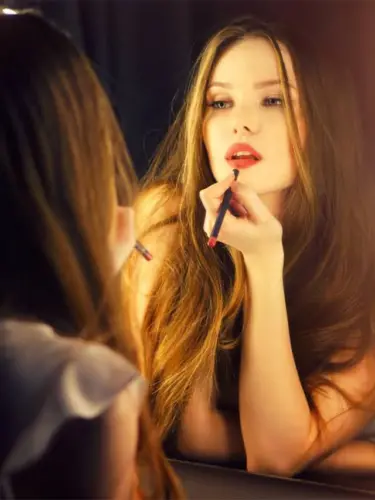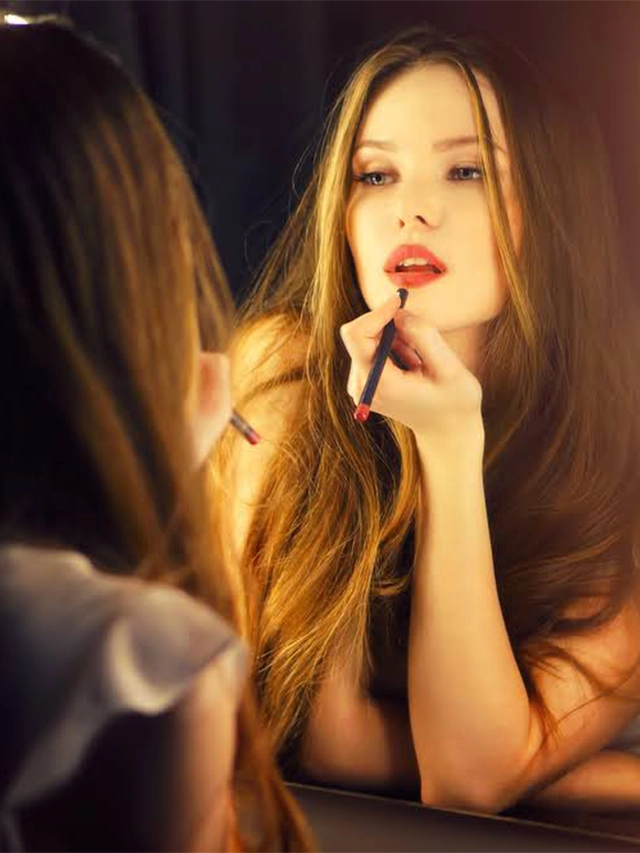Last Updated on February 16, 2025

Makeup serves as the foundation, accentuating features and adding depth. It’s the initial step in painting the canvas, offering a transformative power that brings the subject to life. On the other hand, post-production is the final polish. Acting as a complementary tool, it refines and emphasizes details that makeup might miss, ensuring the portrait’s perfection.
Prepping the Face
Before embarking on the journey of makeup application, the canvas — or, in this case, the face — demands proper care. A clean and moisturized face is akin to a primed canvas, ensuring that whatever is applied to it adheres better and looks more radiant. Daily pollutants, natural oils, and dead skin cells can impede makeup application, resulting in an uneven finish.
Moisturizing is another non-negotiable step. Hydrated skin appears more youthful and ensures that makeup doesn’t settle into fine lines or dry patches. Opt for a moisturizer suitable for the skin type, whether oily, dry, or combination.
Finally, priming acts as a bridge between skincare and makeup. A good primer smoothens the skin’s surface, blurs imperfections, and provides a grip for makeup, ensuring longevity and vibrancy. To select the primer, consider skin texture and desired finish. For instance, a pore-filling primer can be a game-changer in portrait photography if pores are a concern.
Base Makeup Application
Foundation is often called the ‘second skin’ in the makeup world. It can transform, creating a uniform complexion while covering blemishes and imperfections. But choosing the right shade and formula is crucial to avoid the dreaded mismatched neck or the ghostly flashback in photos.
Begin by understanding the skin’s undertone—cool, warm, or neutral. This can guide you in selecting a shade that seamlessly blends with your natural skin color. Swatching on the jawline and checking in natural light is a foolproof method to find a match.
The formula is equally vital. A hydrating, dewy foundation works wonders for drier skin types, while oilier skins might benefit from matte finishes. Remember to blend well, preferably using tools like a damp beauty sponge or a foundation brush. This prevents the foundation from looking cakey or heavy. Setting with a translucent powder can further ensure the makeup remains impeccable throughout the day.
Enhancing Features
In the artistry of makeup, highlighting and contouring play pivotal roles in sculpting and defining the face. Contouring uses shadows to create the illusion of more chiseled cheekbones, a slimmer nose, and a more defined jawline. It’s all about adding depth where needed. In contrast, highlighting brings forward and illuminates specific areas like the tops of cheekbones, the bridge of the nose, and the brow bone, lending a radiant dimension to the face. Combined, these techniques create a harmonious interplay of light and shadow, revealing a beautifully structured look.
Complementing the above, blush, bronzer, and highlighter add warmth, glow, and a touch of natural color. A bronzer imparts a sun-kissed warmth, especially when applied to the perimeter of the face and the hollows of the cheeks. Blush, applied to the apples of the cheeks, mimics a natural flush, making the face appear lively and youthful. Lastly, a strategically placed highlighter on the high points of the face can capture light beautifully, creating an ethereal glow. To get some inspiration, check out Vogue’s article on the “no-makeup” look.
Eye Makeup for Portraits
The eyes are dubbed the windows to the soul, and in portraits, they are focal points that draw viewers in. Selecting neutral or complementary eyeshadow shades ensures the eyes stand out without being overshadowed. Earthy tones, soft mauves, or gentle golds can enhance the natural eye color, offering depth and intrigue. When in doubt, stick to shades that match the skin’s undertone or contrast the eye color, ensuring they pop.
Application technique plays a significant role in elevating the overall look of portrait photography. Start with a primer to prevent creasing and enhance pigment payoff. Layer eyeshadows, moving from light to dark, blending seamlessly to avoid harsh lines. A well-applied eyeliner, be it a soft smudged line or a sharp wing, can define the eyes further. Finally, with its magical ability to lengthen and volumize lashes, mascara completes the look, ensuring eyes that are captivating and expressive.
Lips and Final Touches
With their expressive nature, the lips have the power to tie an entire makeup look together. Choosing a lip color that complements the overall makeup without overpowering is essential. Nudes, soft pinks, or muted berries can naturally enhance lips, making them appear fuller and more defined. A matte or satin finish works best for portrait photography, providing color without excessive shine. The balance is key; if the eyes are the primary focus, opt for a muted lip shade and vice versa. If you focus on the lips, use bright shades, such as red, which is always in trend. For iconic shades of red lipstick, you can refer to those picked by Harper’s Bazaar staff.
Setting is crucial to ensure that all the effort put into makeup application will last. A good setting spray acts as a protective barrier, locking in makeup to prevent smudging and fading. A light dusting of translucent setting powder, especially in the T-zone, can combat unwanted shine, delivering a flawless finish throughout the photoshoot.
Enhancing Portraits through Post-Production
Portrait photography reaches its zenith in post-production. The following techniques amplify a portrait’s natural allure, turning every shot into a masterpiece:
1. Brightness and Contrast
Subtle tweaks in brightness and contrast are often underrated, but can significantly impact an image. A photograph can achieve deeper dimensions by carefully adjusting these elements, ensuring that facial features stand out. This results in portraits that aren’t just lifelike but leap off the page with dynamism and depth.
2. Grain Removal
Graininess, typically an unintentional byproduct of certain shooting conditions, can distract from a portrait’s main subject. Modern tools designed for photo grain removal can restore the original clarity of the image. This means photographs that are sharper, clearer, and free from any distractions, preserving every nuance of the subject’s expression.
3. Eyes and Lips Enhancement
The eyes are the first thing a viewer notices, and they tell a story all their own. Enhancing them adds a magnetic sparkle, drawing viewers in. Similarly, the lips can convey emotion, attitude, and personality. By emphasizing their natural color and shape, a photographer can add another layer of depth and charisma to the portrait.
4. Softening and Retouching
In striving for authenticity, it’s essential to remember that some imperfections might detract from the main focus. Softening and retouching, when done with a light touch, can highlight a subject’s inherent beauty. It’s not about creating a perfect image but ensuring that minor distractions are minimized, so the subject’s true essence remains undiluted.
Monochrome and Selective Color in Portraiture
The power of color in capturing life’s vibrancy is undeniable. However, a profound depth emerges when we opt to make the image black and white. This monochromatic transformation reveals the subject’s essence, accentuating contrasts, shadows, and raw emotions often overshadowed by hues.
Moreover, using selective color becomes an exercise in precision and storytelling. It allows most of the image to remain grayscale but highlights a specific detail or emotion with a pop of color. This technique creates a striking visual narrative, adding layers of depth to an otherwise simple portrait photography.
Incorporating these post-production techniques ensures the portrait captures and enhances the subject’s essence, delivering a truly captivating image.
Conclusion: Portrait Photography
Capturing a stunning portrait combines technique, creativity, and attention to detail. Every phase holds significance, from the initial steps of makeup application to the refined post-production touches. It highlights the subject’s natural beauty while employing tools and skills to enhance and elevate the final image. As with any form of art, experimentation and continuous learning are key. Embrace the synergy between makeup and editing, and let every portrait you create be a testament to your evolving craft.
No post found!
What do portrait photographers do?
Portrait photographers focus on capturing images of individuals or groups, and often operate within their personal studios or a staged shoot setting.
What makes good portrait photography?
An effective portrait photograph possesses a captivating composition that highlights the subject. A well-crafted portrait photography accentuates the individual’s most favorable attributes, presenting them in an appealing manner.
What skills does a portrait photographer need?
Some skills include:
-Creativity.
-Attention to detail.
-Interpersonal skills.
-Proficiency with photo-editing software.
-Camera operation.
Meet Kourtney, a writer specializing in sex and relationships. Known for her honest and insightful approach, she explores themes of intimacy and personal growth. Her work combines personal anecdotes, expert opinions, and practical advice, helping readers navigate the complexities of modern relationships and embrace their desires. Kourtney's writing serves as a guide for those seeking authentic and fulfilling connections.
- Kourtney Andersonhttps://successiblelife.com/author/kourtney-anderson-freelance-writer/
- Kourtney Andersonhttps://successiblelife.com/author/kourtney-anderson-freelance-writer/
- Kourtney Andersonhttps://successiblelife.com/author/kourtney-anderson-freelance-writer/
- Kourtney Andersonhttps://successiblelife.com/author/kourtney-anderson-freelance-writer/


